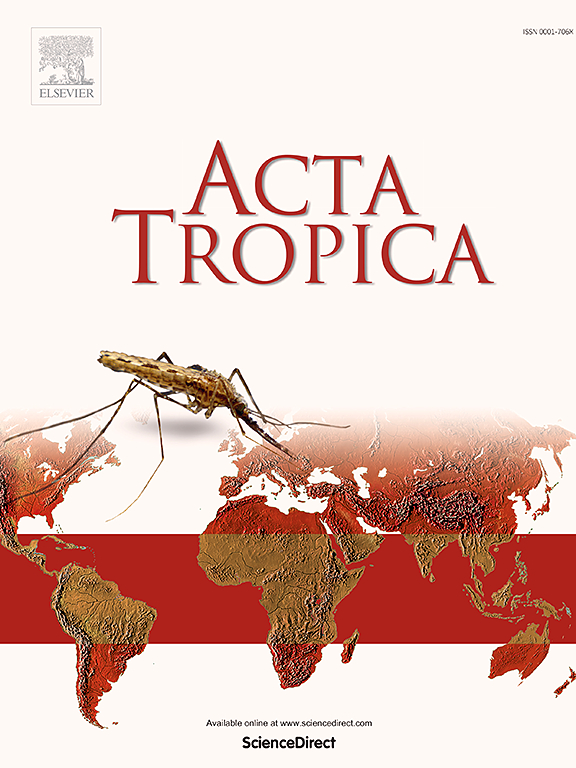Genetic diversity of Plasmodium vivax population in northeast Myanmar assessed by amplicon sequencing of PvMSP1 and PvMSP3α
IF 2.1
3区 医学
Q2 PARASITOLOGY
引用次数: 0
Abstract
This study aimed to assess the baseline genetic diversity of the Plasmodium vivax population in an endemic area of northeast Myanmar at the onset of the malaria elimination campaign in the Greater Mekong Subregion. We genotyped 125 P vivax clinical samples at two merozoite surface protein loci, PvMSP1 and PvMSP3α, by amplicon deep sequencing. Our study revealed that the parasite population in this region was highly diverse, identifying 60 PvMSP1 and 98 PvMSP3α haplotypes, with haplotype diversity of 0.929 and 0.944, respectively. Remarkably, 97.6 % (122/125) of the patients harbored multiclonal infections with a mean multiplicity of infection of 4.18, indicating a relatively high transmission intensity. Neutrality tests and network analysis suggested a recent parasite population expansion, consistent with the concurrent malaria outbreak in the region. These findings underscore the existence of a highly diverse P. vivax population at the China-Myanmar border, highlighting the need for effective malaria control strategies to achieve the goal of regional malaria elimination.
通过 PvMSP1 和 PvMSP3α 的扩增子测序评估缅甸东北部间日疟原虫种群的遗传多样性。
本研究旨在评估大湄公河次区域消除疟疾运动开始时缅甸东北部流行地区间日疟原虫种群的基线遗传多样性。我们通过扩增子深度测序对 125 份间日疟原虫临床样本的两个子虫表面蛋白位点 PvMSP1 和 PvMSP3α 进行了基因分型。我们的研究发现,该区域的寄生虫群体具有高度多样性,共鉴定出 60 个 PvMSP1 和 98 个 PvMSP3α 单倍型,单倍型多样性分别为 0.929 和 0.944。值得注意的是,97.6%(122/125)的患者携带多克隆感染,平均感染倍数为 4.18,表明传播强度相对较高。中性检验和网络分析表明,寄生虫种群最近有所扩大,这与该地区同时爆发的疟疾疫情相一致。这些发现强调了中缅边境存在高度多样化的间日疟原虫种群,突出表明需要采取有效的疟疾控制策略,以实现消除区域疟疾的目标。
本文章由计算机程序翻译,如有差异,请以英文原文为准。
求助全文
约1分钟内获得全文
求助全文
来源期刊

Acta tropica
医学-寄生虫学
CiteScore
5.40
自引率
11.10%
发文量
383
审稿时长
37 days
期刊介绍:
Acta Tropica, is an international journal on infectious diseases that covers public health sciences and biomedical research with particular emphasis on topics relevant to human and animal health in the tropics and the subtropics.
 求助内容:
求助内容: 应助结果提醒方式:
应助结果提醒方式:


